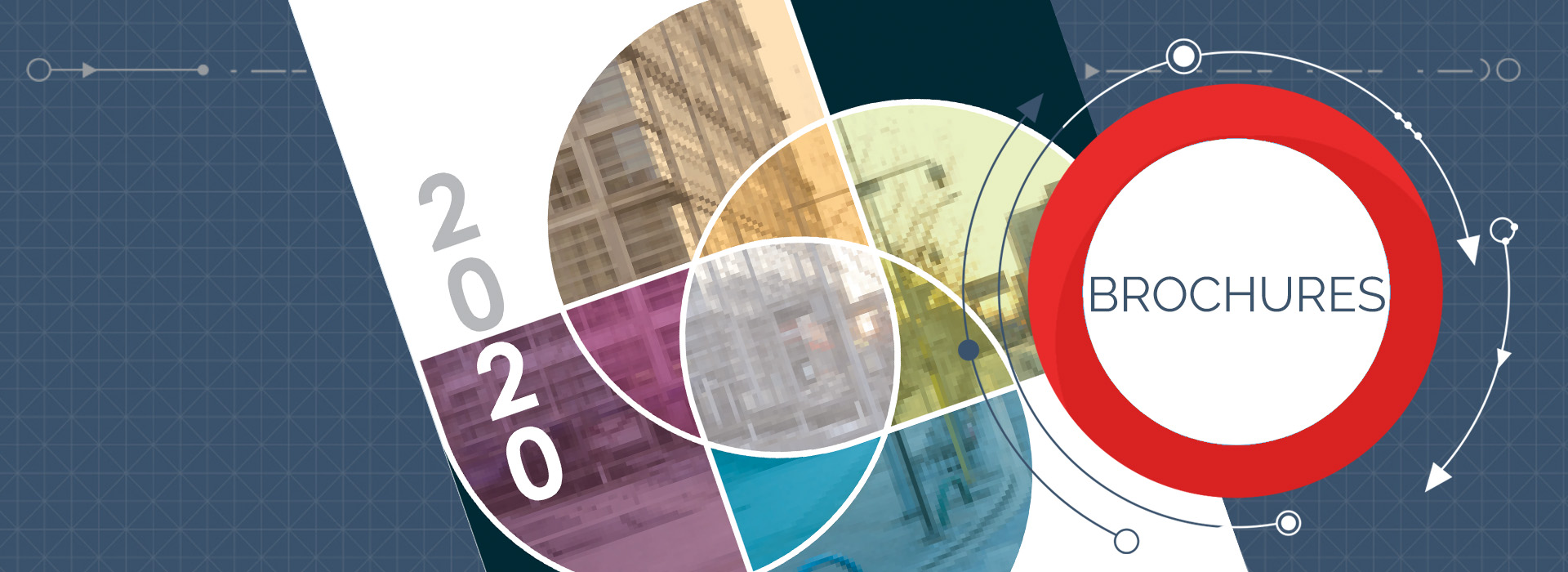
While brochures haven’t received much attention lately, they still fill some important roles in the marketing mix. They’re a great way to go deep into the benefits of your solution, they provide a tangible asset to send prospects when they ask for more information and they create a valuable CTA on your product page. But not all brochures are created equal. The best ones can position you for success and give you a leg up on your competition.
In this blog, we’ll share some tips to help you create brochures that can set your product apart in a crowded marketplace.
1. Pinpoint the problem
The most important thing to establish at the top of your brochure is the problem your product solves. But all too often, high tech B2B brochures lead with an ambiguous product name, a little hyperbole and a bunch of technical details. Something like this: “The Initech 4800 features 16 modular ports that can achieve up to 500 Gbps of industry-leading network connectivity.”
Unfortunately, that doesn’t tell readers why they found your solution interesting in the first place, so it’s better to begin by categorizing the problem and immediately following it with a description of what the product does to address it. For example: “The Initech 4800 Data Center Switch is designed to help distributed enterprises overcome the network bottlenecks that impede high-performance transactional applications – so their remote teams can get more done, faster.”
This approach to the intro helps remind people that they’ve found the right solution for the job before diving into the details.
2. Highlight your differentiation
Keep in mind that when prospects reach the stage when they have your brochure in hand, they’re likely looking at other solutions from other companies, too. That’s why it’s critical to highlight your competitive strengths and differentiators in your brochure. Figure out what separates you from the pack and state it clearly. Call out boxes, comparison charts and excerpts from your case studies can really help here.
3. Make sure the important stuff stands out
Imagine being “this close” to making a final decision on a major purchase, but needing one small nugget of information to confirm that you’re making the right choice. Now imagine searching everywhere for that last detail without being able to find it. Don’t put your prospects in that frustrating situation – think about those important nuggets and be sure you’ve included them in your brochure. But don’t stop there. Make sure you structure things in a way that makes sense, with clear section headers, sub-heads and bullets that speed navigation and ensure that those critical details don’t get lost in a sea of text.
4. Bring your value to life with pictures
Have you ever looked at the images in a brochure and wondered what they’re trying to tell you? This tends to happen when companies use the existing images they have on-hand rather than custom developing pictures to fill information gaps or complete their story. If complex diagrams, busy tables or meaningless stock photography are taking over your brochures, it’s probably time to try something new. We like to take a copy-first approach, identifying the greatest gaps in the story and choosing the right visuals to fill them.
5. Cut down the copy every chance you get
Here’s a cool thing that happens when you use the right pictures in your brochure – it often creates opportunities to reduce your word count. Let your pictures do the talking whenever possible and cut any redundant text you can. That not only holds true in the design stage, but at every step of content development. Choose your words carefully, help your readers find what they need efficiently and edit out anything unnecessary.
6. Lean toward a clear writing style
When marketers sit down to write a brochure, they sometimes feel the urge to get cute with the copy. But adding superlatives, rhymes, puns or alliteration just for the sake of “punching things up” comes at a risk. Overly clever writing can obscure your key messages and leave readers wondering what you’re trying to say. If you find language in your brochure that needs to be re-read a couple times before it makes sense, reel it in a bit and make your point more clearly.
7. Finish strong
As with most content projects, brochures are likely to come out better if you begin at the end. That means thinking through the call to action and the one key message you’d like readers to take away – before you start writing. Doing so will help ensure that your brochure builds to a key point and drives readers toward your CTA. A good content brief and a great content manager can help you set a solid direction for your brochure so it’s sure to end well.
While brochures may not get as much fanfare as they once did, they’re still a valuable part of the high tech B2B content library – and we still develop them frequently for clients. The tips we’ve shared here are based on those experiences, and we hope they’ll help make your next brochure stronger.
If you ever need a hand developing a brochure (or any content at all), please don’t hesitate to contact us. And if you’d like more tips to help strengthen your content, check out our recent posts on infographics, emails, case studies and blogs.
